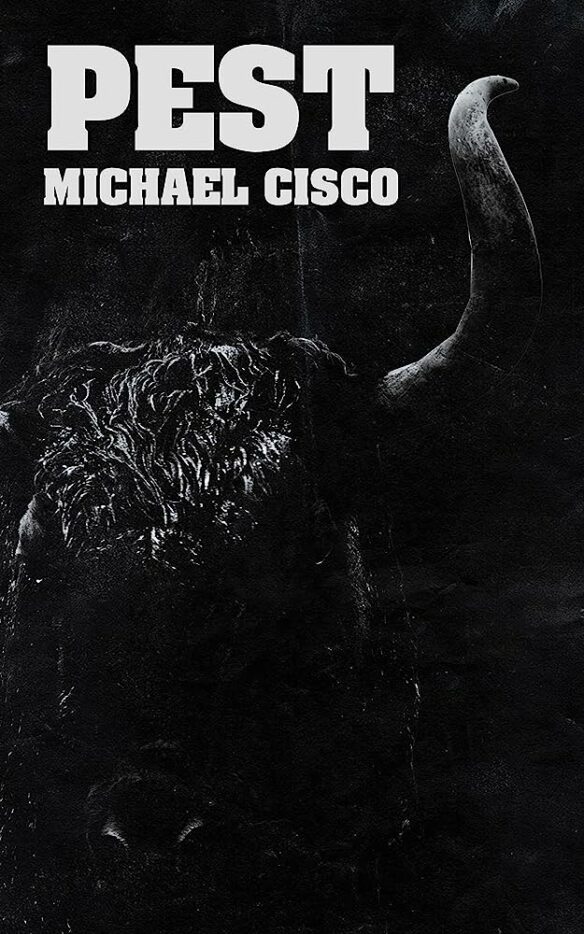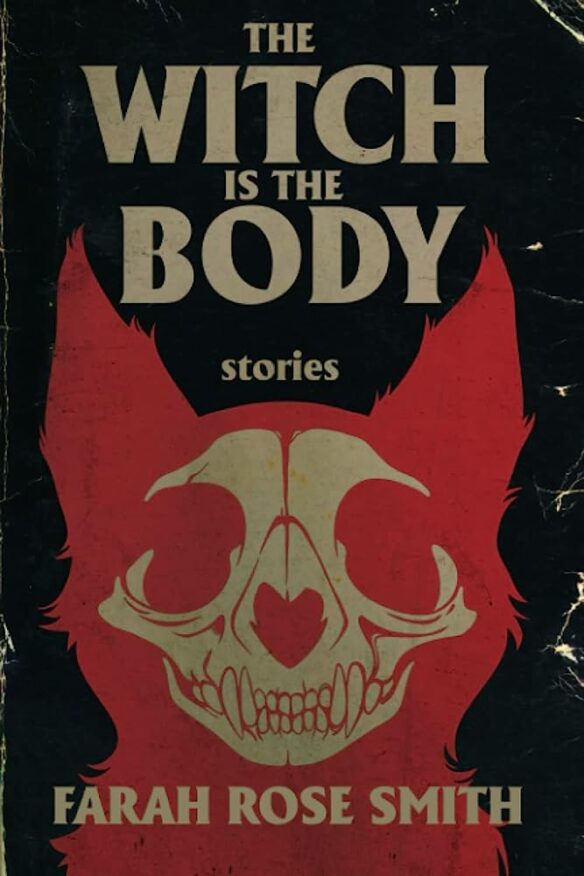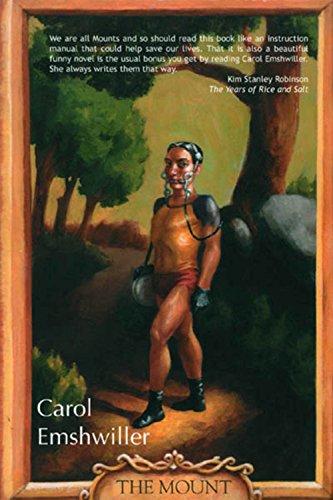(1) KGB. Fantastic Fiction at KGB reading series hosts Ellen Datlow and Matthew Kressel present Michael Cisco and Farah Rose Smith on Wednesday, July 12, beginning at 7 Eastern.

MICHAEL CISCO

Michael Cisco is the author of several novels, including The Divinity Student, The Great Lover, The Narrator, and Pest, as well as the Stoker-nominated nonfiction book Weird Fiction: A Genre Study. His short fiction has appeared in numerous anthologies, and his most recent collection is Antisoc. He is the author of two novellas: ETHICS, and Do You Mind If We Dance With Your Legs? He lives in New York City.
FARAH ROSE SMITH

Farah Rose Smith is the author of the horror and dark fantasy novellas Eviscerator, The Almanac of Dust, Anonyma, and Lavinia Rising. She has also written two collections of short supernatural fiction, Of One Pure Will and The Witch is the Body. Smith recently completed a master’s degree in English Literature, Language, and Theory and is writing her third collection. Born and raised in Rhode Island, Smith currently lives in New York City with her husband, weird fiction author Michael Cisco, and their three cats.
Location: The KGB Bar, 85 East 4th Street, New York, NY 10003 (Just off 2nd Ave, upstairs).
(2) BANKS ACCOUNT. On the 10th anniversary of the author’s death, the Guardian’s Steven Poole helps readers decide “Where to start with: Iain Banks”. The second book he considers is Consider Phlebas:
The billionaires’ favourite
Banks originally wanted to be a science-fiction author, but after several unsuccessful drafts in the 1970s decided to write something “normal” instead, thus rocket-boosting his literary career with The Wasp Factory. He then started publishing science fiction as Iain M Banks, beginning with Consider Phlebas, a phrase taken from Eliot’s The Waste Land. It’s a cosmos-spanning romp that introduces the Culture, a post-human galactic civilisation in which AI does all the work and no one wants for food or other resources. (Fully automated luxury communism – in space.)
In this first story, the smug liberal Culture is at war with the Idirans – AI refuseniks who are waging a jihad against them. Through this backdrop wanders sympathetic mercenary Bora Horza Gobuchul, a Mandalorian-style drifter with a very particular set of skills. Banks’s vision of a starfaring, post-scarcity civilisation run by AIs, in which people can change their DNA at will and live for 400 years, is publicly admired by tech giants such as Jeff Bezos and Elon Musk – even as they toil along with us in the capitalist present. Unfortunately for Bezos, a planned Amazon TV series based on the novel was cancelled in 2020 after Banks’s estate withdrew permission.
(3) APOCALYPSE, THE NEXT GENERATION. The New York Times magazine looks at media to probe the question “Will Children Save Us at the End of the World?”
…There’s “Station Eleven,” the 2014 novel by Emily St. John Mandel about the aftermath of a swine flu, which was turned into a much-discussed 2021 HBO Max series, in which an 8-year-old girl manages to survive with the help of a stranger turned surrogate parent. “The Last of Us,” HBO’s video game adaptation, which debuted in January, features a zombie-fungus pandemic; a seemingly immune teenage girl is humanity’s one hope. “Leave the World Behind,” Rumaan Alam’s 2020 novel — soon to be a movie — about a bourgeois family vacation gone very bad, features a vague but menacing threat of apocalypse. Also loosely belonging to this category are the shows “Yellowjackets” (2021-present) — a girls’ soccer team turns to cannibalism after a plane crash — and “Class of ’07” (2023) — a school reunion coincides with a climate apocalypse — and the new-to-Netflix 2019 Icelandic movie “Woman at War” (a renegade activist tries to stop the destruction of the environment and adopt a child).
These stories are, in various ways, about how and whether our children can survive the mess that we’ve left them — and what it will cost them to do so. In “Station Eleven,” post-pans (children who were born after the pandemic) are both beacons of optimism and conscripted killers deployed by a self-styled prophet who hopes to erase anyone who holds on to the trauma of the past. And in “The Last of Us,” Ellie, the young girl with possible immunity (played by the actor Bella Ramsey), is forced to kill to survive, and to grapple with whether it’s worth sacrificing her own life in the search for a cure….
The anxieties that these works explore — about planetary destruction and what we did to enable it — are, evidence suggests, affecting the desire of some to have children at all, either because of fear for their future or a belief that not procreating will help stave off the worst. But following the children in these fictions, who didn’t create the conditions of their suffering, isn’t just a devastating guilt trip. Almost all these stories also frame children as our best hope, as we so often do in real life. Children, we need to believe, are resilient and ingenious in ways that adults aren’t. In these stories, when the phones stop working and Amazon stops delivering, it’s children, less set in their ways, who can rebuild and imagine something different. They’re our victims but also our saviors….
(4) SALVAGE RIGHT NEWS. Salvage Right by Sharon Lee and Steve Miller, the 25th Liaden Universe® novel (and their 100th collaborative work), will be officially released in paper and ebook editions July 4, 2023. Some stores already have the hardback on the shelves; signed copies are available from Uncle Hugo’s bookstore in Minneapolis.

Sample chapters from Salvage Right are available online at Baen Books
In honor of Salvage Right Lee and Miller are taking part in a number of podcasts and special events:
- Annies Bookstore: Selina Lovett at Annie’s Bookstore did a Zoom interview with the authors, which can be found here
- Watch for Griffin Barber’s interview with them at the Baen Free Radio Hour
- Upcoming: An interview with fyyd: CultureScape with Peter PischkeCultureScape with Peter Pischke with release date TBA
- Another interview with Under The Radar SFF Books is due later in July
- The authors will be doing a virtual book signing at Pandemonium Books, Wednesday July 26, details TBA
(5) MANNERS, PLEASE. Oghenechovwe Donald Ekpeki thought a timely reminder was in order about the awards etiquette published by the Unofficial Hugo Book Club Blog a couple of months ago, so he retweeted it today. Thread begins here. Here’s an excerpt:
(6) AMY WISNIEWSKI (1947-2023). Mythopoeic Society member Amy Wisniewski died June 20 at the age of 76. She is survived by her wife, Edith Crowe. David Bratman has written a tribute on Kalimac’s corner, “Amy Wisniewski”, which says in part:
…Amy was already in the Society when I arrived. The first meeting I attended was at the small house that she and her partner (and later wife) Edith Crowe were living at in the flatlands of Redwood City. 48 years later, in a larger house further up in the hills, they were still hosting meetings. Almost every year, except during pandemics, they hosted the annual Reading and Eating Meeting. We would gather for a potluck meal and then take turns reading short selections around the (once real, later theoretical) fire.
For a few years, Amy was our discussion group’s moderator, and she actually directed meetings with a skill and knowledge surpassing that of anyone else who had that title. Amy wasn’t a Tolkien scholar; she didn’t give papers at Mythcon; but she had read and absorbed his books and did the same for the books we were discussing, and consequently always had intelligent things to say….
(7) MEMORY LANE.
2002 – [Written by Cat Eldridge from a choice by Mike Glyer.]
Tonight we have a Beginning by Carol Emshwiller. She was prolific as a short fiction writer with more stories than I can comfortably count. The two volume collection of The Collected Stories of Carol Emshwiller that Nonstop Press did a decade back collects nearly twelve hundred pages of her stories.
She did just six novels of which four were genre and two were in the cowboy genre, Ledoyt and Leaping Man Hill. No, I didn’t know she’d written the latter. All four of her genre novels are quite excellent. The Mount which is where our Beginning comes from garnered a Philip K. Dick Award.
And now from stage left comes our Beginning…
We’re not against you, we’re for. In fact we’re built for you and you for us – we, so our weak little legs will dangle on your chest and our tail down the back. Exactly as you so often transport your own young when they are weak and small. It’s a joy. Just like mother-walk.
You’ll be free. You’ll have a pillow. You’ll have a water faucet and a bookcase. We’ll pat you if you do things fast enough and don’t play hard to catch. We’ll rub your legs and soak your feet. Sams and Sues, and you Sams had better behave yourselves.
You still call us aliens in spite of the fact that we’ve been on your world for generations. And why call aliens exactly those who have brought health and happiness to you? And look how well we fit, you and us. As if born for each other even though we come from different worlds.
We mate the stock with the stocky, the thin with the thin, the pygmy with the pygmy. You’ve done a fairly good job of that yourselves before we came. As to skin, we like a color a little on the reddish side. Freckles are third best.

(8) TODAY’S BIRTHDAYS.
[Compiled by Cat Eldridge.]
- Born June 29, 1919 — Slim Pickens. Surely you remember his memorable scene as Major T. J. “King” Kong in Dr. Strangelove? I certainly do. Simply astounding. And, of course, he shows up in Blazing Saddles as Taggart. He’s the uncredited voice of B.O.B in The Black Hole and he’s Sam Newfield in The Howling. He’s got some series genre work including several appearances on Alfred Hitchcock Presents, plus work on The Man from U.N.C.L.E. and Night Gallery. (Died 1983.)
- Born June 29, 1920 — Ray Harryhausen. All-around film genius who created stop-motion model Dynamation animation. His work can be seen in The 7th Voyage of Sinbad (his first color film) which was nominated for a Hugo at Detention, Jason and the Argonauts, Mighty Joe Young and Clash of the Titans. (Died 2013.)
- Born June 29, 1943 — Maureen O’Brien, 80. Vicki, companion of the First Doctor. Some 40 years later, she reprised the role for several Big Finish Productions Doctor Who audio works. She had a recurring role as Morgan in The Legend of King Arthur, a late Seventies BBC series. Her Detective Inspector John Bright series has been well received.
- Born June 29, 1947 — Michael Carter, 76. Best remembered for being Gerald Bringsley in An American Werewolf in London, Von Thurnburg in The Illusionist and Bib Fortuna in the Return of the Jedi. He plays two roles as a prisoner and as UNIT soldier in the Third Doctor story, “The Mind of Evil”.
- Born June 29, 1950 — Michael Whelan, 73. I’m reasonably sure that most of the Del Rey editions of McCaffrey’s Dragonriders of Pern series was where I first noticed his artwork but I’ve certainly seen it elsewhere since. He did Heinlein’s The Cat Who Walks Through Walls cover which I love and many more I can’t recall right now. And there’s a wonderful collection of work available, Beyond Science Fiction: The Alternative Realism of Michael Whelan.
- Born June 29, 1956 — David Burroughs Mattingly, 67. He’s an American illustrator and painter, best known for his numerous book covers of genre literature. Earlier in his career, he worked at Disney Studio on the production of The Black Hole, Tron, Dick Tracy and Stephen King’s The Stand. His main cover work was at Ballantine Books where he did such work as the 1982 cover of Herbert’s Under Pressure (superb novel), 2006 Anderson’s Time Patrol and the 1986 Berkley Books publication of E. E. ‘Doc’ Smith Triplanetary.
- Born June 29, 1957 — Fred Duarte, Jr. His Birthday is today and this long-time Texas fan is eulogized by Mike here upon his passing almost a decade back. (Died 2015.)
(9) COMICS SECTION.
Catching up with Tom Gauld —
(10) JEOPARDY! [Item by David Goldfarb.] From the June 28 episode, three clues in the single Jeopardy round.
Open Door, $1000: Gandalf initially struggles to open the door to this place, but after speaking the Elvish word for “friend” he gets it right
This was a triple stumper.
Google Easter eggs, $400: A Google search for what’s the answer to life, the universe, & everything gives you this number
Bryan White (whose score was $4200!): “What is 37?”
Neither of the other two could respond correctly. Douglas Adams is spinning in his grave.
$800: Google this HBO show with Pedro Pascal & keep clicking the mushroom icon for your screen to be enveloped by some humongous fungus
Bryan knew “The Last of Us”.
(11) ALL KAIJU ALL THE TIME. “24-Hour Godzilla Channel Coming to Pluto TV With Exclusive Films” promises Comicbook.com.
Godzilla is coming to Pluto TV with a huge new channel dedicated to showing off tons of Godzilla movies and shows 24 hours a day with some exclusive films to boot! TOHO’s famous Kaiju has been stomping through many eras since the giant monster was first introduced back in the 1950s, and has since amassed a massive library of TV shows and movies that fans still enjoy to this day. Now Pluto TV has made checking out your favorite Godzilla projects easier than ever before with a new streaming channel with the platform highlighting all of the biggest and best Godzilla outings over the years!
Pluto TV has announced a new Godzilla channel filled with not only classics such as the original 1954 Godzilla debut film, Godzilla vs. Megalon, and more but even left-field additions such as the animated Godzilla: The Series from the late ’90s and early ’00s. But the biggest surprise is that this new Godzilla channel will also offer up seven Godzilla films that are exclusive to Pluto TV as fans won’t be able to find them streaming anywhere else. Read on to see the massive list of movies and TV shows coming to Pluto TV’s new Godzilla channel launching on July 1st….
(12) HERE’S MY NUMBER AND A DIME, DIAL ANYTIME. “The Real History Behind the Archimedes Dial in ‘Indiana Jones and the Dial of Destiny’” in Smithsonian Magazine.
Off the coast of the Greek island of Antikythera in 1900, sponge divers came across a shipwreck filled with ancient treasures. Hidden among flashier finds like marble statues and jewelry was a mysterious device known today as the Antikythera mechanism.
Dated to more than 2,000 years ago, the device “is probably the most exciting artifact that we have from the ancient world,” says Jo Marchant, author of the 2008 book Decoding the Heavens: Solving the Mystery of the World’s First Computer. More than a millennium before 13th-century Europeans invented the first mechanical clocks, the Antikythera mechanism employed similarly complex technology—including gear wheels, dials and pointers—to chart the cosmos. The ancients used it to predict eclipses, track the movement of the sun and the moon, and even see when sporting events like the Olympics were scheduled to take place.
Contrary to what Indiana Jones and the Dial of Destiny, the latest installment in the epic franchise, suggests, the Antikythera mechanism won’t transport you back in time—not literally, at least. Every Indiana Jones adventure needs an exotic MacGuffin; in the new outing, which arrives in theaters this week, the hero chases after the Archimedes Dial, a fictionalized version of the Antikythera mechanism that predicts the location of naturally occurring fissures in time.
…In the film’s 1944-set prologue, Indy (Harrison Ford) captures a train loaded with Nazi plunder, including the titular Dial of Destiny. The movie then jumps ahead to 1969. Indy is set to retire from teaching archaeology, and the world is celebrating the safe return of the Apollo 11 crew. One of the men most responsible for the United States’ victory in the space race is Jürgen Voller (Mads Mikkelsen), a former Nazi who was given sanctuary by the Allies in exchange for his expertise, much like the real-life NASA engineer Wernher von Braun. When Indy learns that Voller wants to use the Archimedes Dial to travel for nefarious purposes, he reluctantly dusts off his old hat and bullwhip to (again) keep a potentially devastating weapon out of Nazi hands….
(13) NATURE EDITORIAL WARNS ABOUT AI. [Item by SF Concatenation’s Jonathan Cowie.] You know, I simply love the end of the world. You can’t beat it. Of course, as long as it is firmly in SF. (Wouldn’t like it in reality: it’d get in the way of afternoon tea and evening real ale down the pub…)
Today’s Nature editorial once more tackles doomsday. Beware of tech companies achieving their goals through obsfucation… “Stop talking about tomorrow’s AI doomsday when AI poses risks today”.
Talk of artificial intelligence destroying humanity plays into the tech companies’ agenda, and hinders effective regulation of the societal harms AI is causing right now.
The idea that AI could lead to human extinction has been discussed on the fringes of the technology community for years. The excitement about the tool ChatGPT and generative AI has now propelled it into the mainstream. But, like a magician’s sleight of hand, it draws attention away from the real issue: the societal harms that AI systems and tools are causing now, or risk causing in future. Governments and regulators in particular should not be distracted by this narrative and must act decisively to curb potential harms. And although their work should be informed by the tech industry, it should not be beholden to the tech agenda.
Many AI researchers and ethicists to whom Nature has spoken are frustrated by the doomsday talk dominating debates about AI. It is problematic in at least two ways. First, the spectre of AI as an all-powerful machine fuels competition between nations to develop AI so that they can benefit from and control it. This works to the advantage of tech firms: it encourages investment and weakens arguments for regulating the industry. An actual arms race to produce next-generation AI-powered military technology is already under way, increasing the risk of catastrophic conflict — doomsday, perhaps, but not of the sort much discussed in the dominant ‘AI threatens human extinction’ narrative.
Second, it allows a homogeneous group of company executives and technologists to dominate the conversation about AI risks and regulation, while other communities are left out. Letters written by tech-industry leaders are “essentially drawing boundaries around who counts as an expert in this conversation”, says Amba Kak, director of the AI Now Institute in New York City, which focuses on the social consequences of AI.
To all of which the SF fan might ask how the genre might contribute…?

[Thanks to Andrew Porter, John King Tarpinian, Chris Barkley, Steven French, Michael Toman, Cat Eldridge, SF Concatenation’s Jonathan Cowie, and Mike Kennedy for some of these stories. Title credit belongs to File 770 contributing editor of the day –dsr-.]
